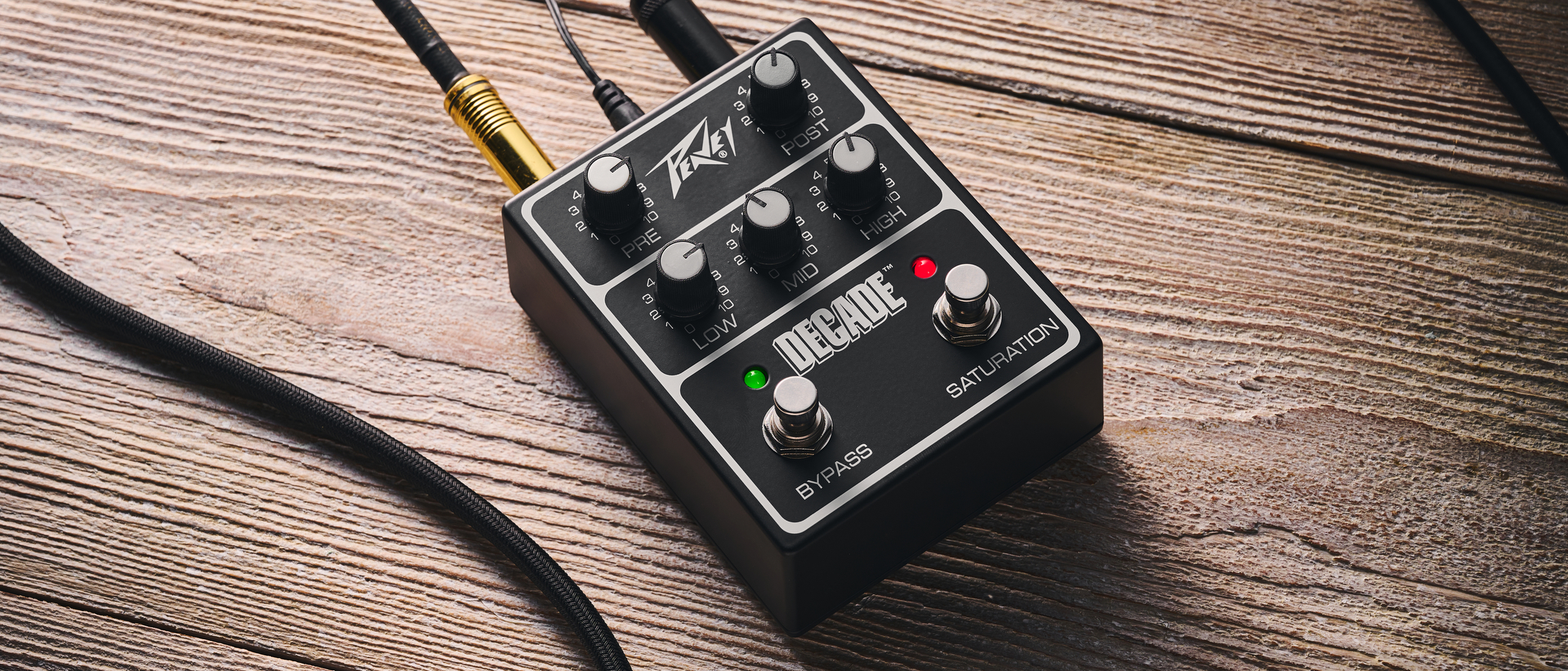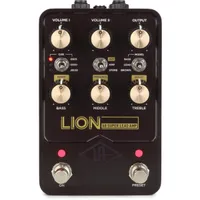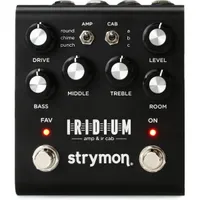MusicRadar Verdict
If you are after the very specific, raw and unpolished tone that only came from this ‘80s relic, then this is most definitely the pedal for you. Peavey has gone to great lengths to bottle the iconic sound of the Decade and deliver it back in a format that is a lot more flexible and user-friendly than the original amp.
Pros
- +
Well made.
- +
Unique tone.
- +
Simple to use.
Cons
- -
Large footprint.
- -
This very specific tone isn’t for everyone.
MusicRadar's got your back
What is it?
The Peavey Decade has come a long way since its debut in the 1980s, evolving from a basic home practice amp to a beloved favourite among stoner rock aficionados. It’s fair to say that this small, solid-state amp wasn’t all that celebrated a few years ago – heck, most of us had forgotten it even existed. Well, one look at the second-hand prices now, and it tells a very different story. What gives? Well, Josh Homme, singer, guitarist, and all-around creative force behind Queens Of The Stone Age, revealed that the secret sauce to his legendary tone was actually this tiny 10W combo.
In collaboration with Peavey, Homme has breathed new life into the Decade with the Decade Too, his signature amp. But now, the legendary sound has been distilled into a compact pedal form, making it easier than ever to recreate those classic QOTSA riffs.
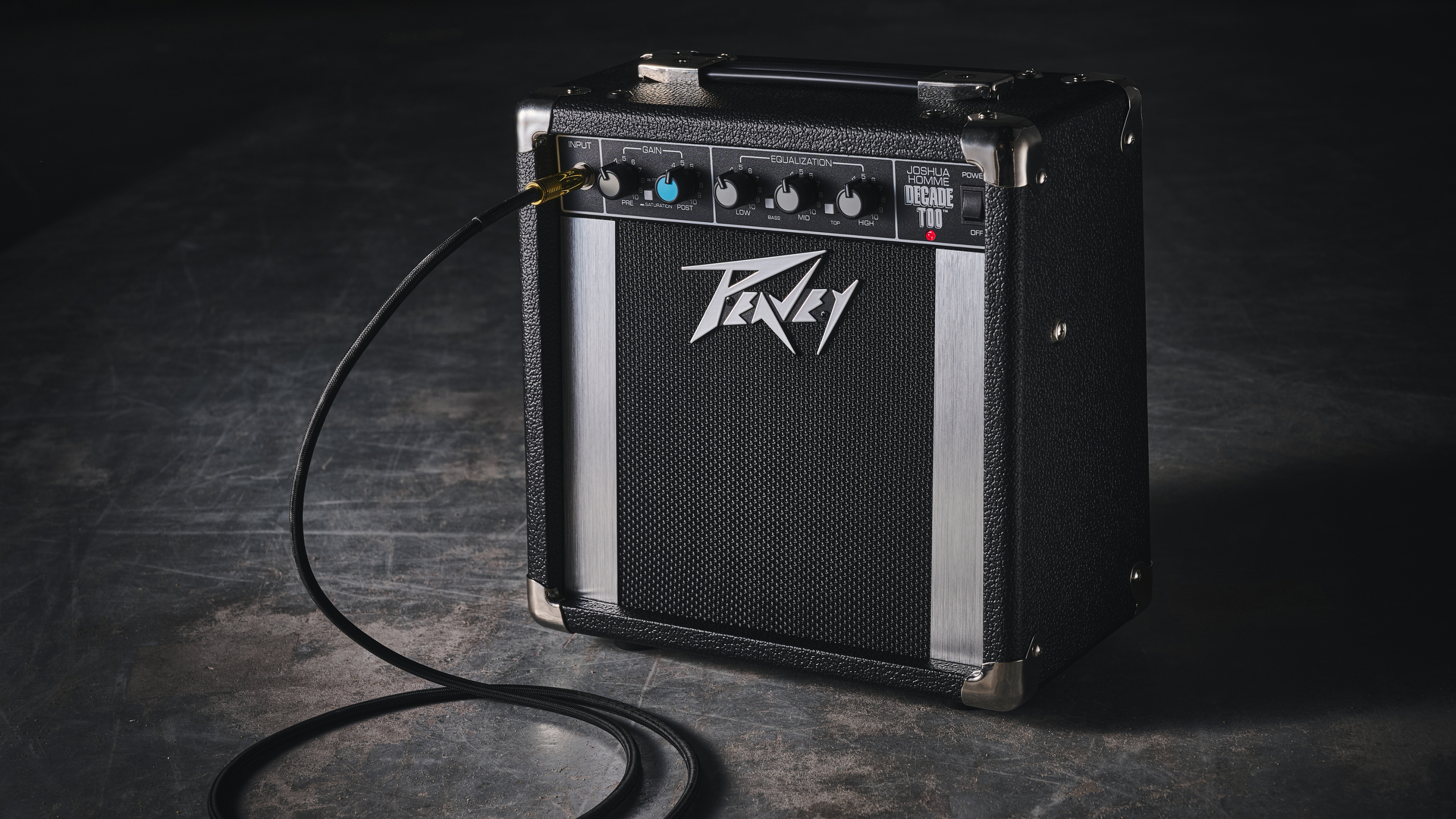
Part of the Peavey Legacy Preamp Series, this pedal is a faithful recreation of the original Decade circuit, preserving all the same controls that made the amp special. Equipped with a switchable Saturation mode, it even emulates the second channel for an extra dose of harmonic overdrive at the stomp of a switch.
Additional features include pre- and post-gain controls, a responsive three-band EQ, and a hard bypass switch with anti-click circuitry. Powered by a standard 9V supply, the pedal internally boosts to 24V, delivering the headroom and dynamic range that defined the legendary original.
So, I’m gonna grab my favourite beaten-up semi-hollow, tune to C-standard, and see if the Decade pedal can help me deliver the feel-good hit of the summer, or if it’s only Rated-R for regret.
Specifications
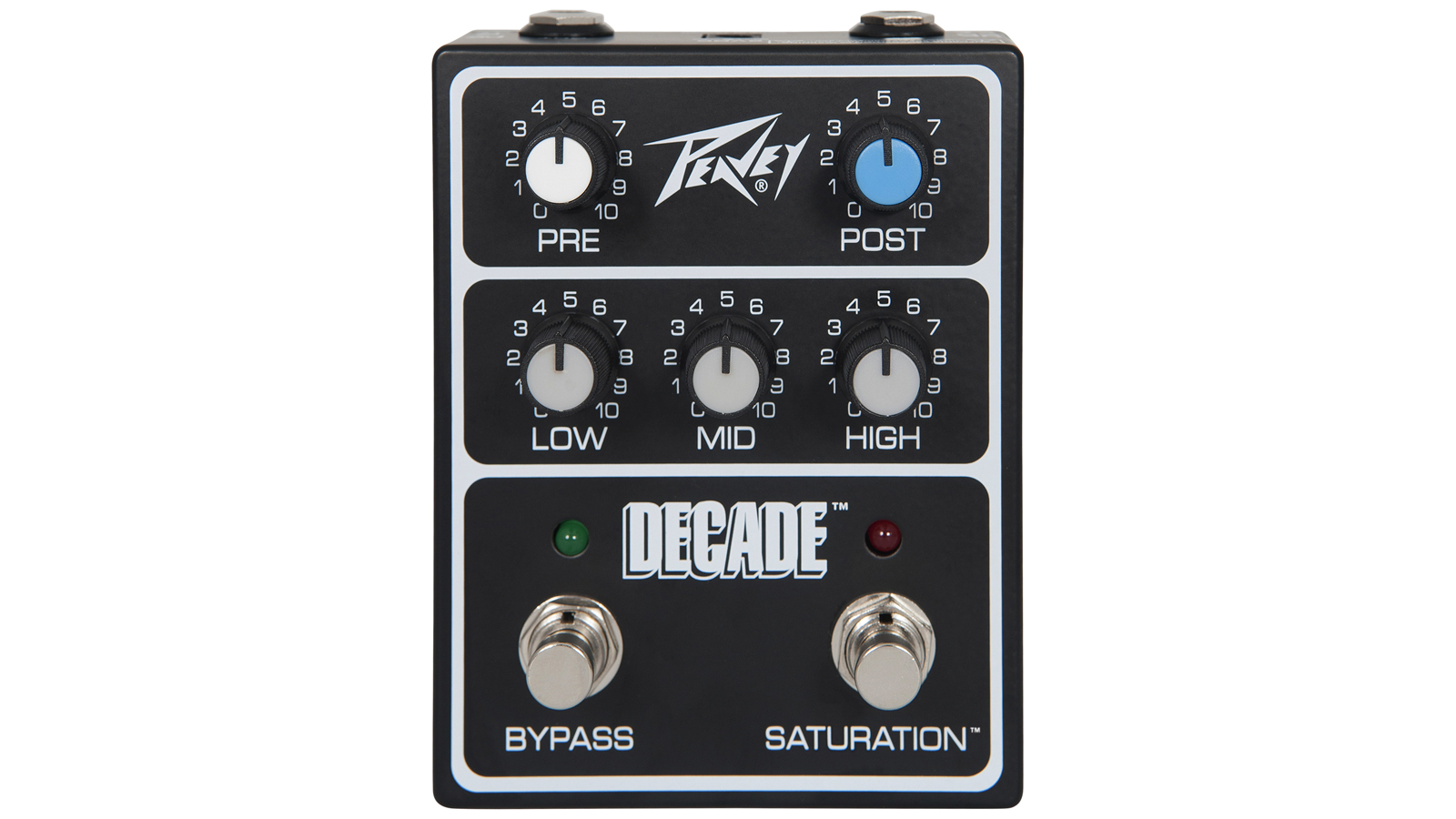
- Launch price: $239/£175/€199
- Type: Amp pedal
- Controls: Pre-gain, post-gain, low, mid, high, bypass, saturation
- Connections: Input, output, power
- Bypass: True bypass
- Power: 9V DC, center-negative 75mA
- Contact: Peavey
Music Radar Demo
Build quality
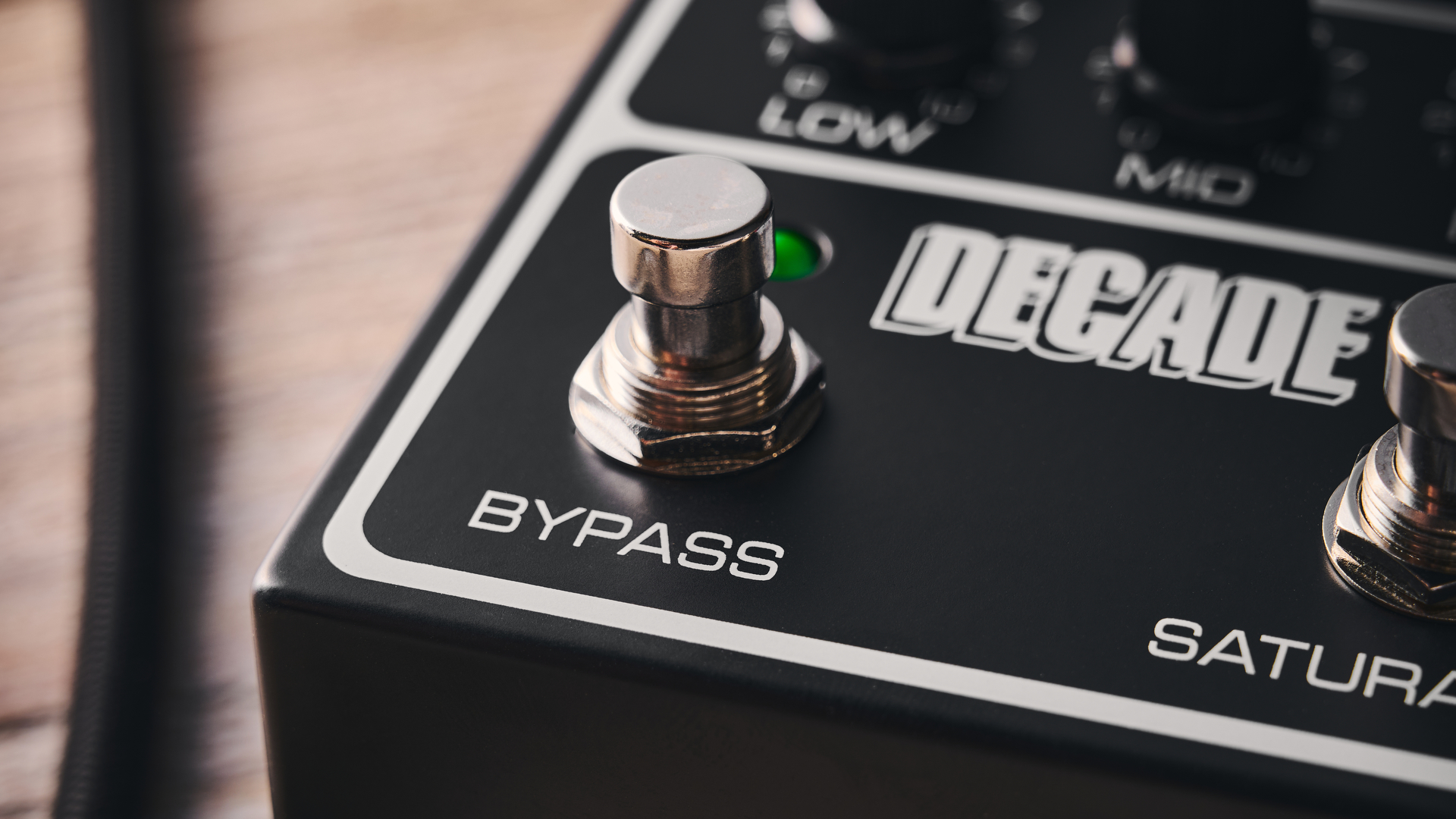
Build quality rating: ★★★★☆
If you are at all familiar with Peavey’s Legacy lineup of pedals, that includes the Bandit, Rock Master, and Session, you’ll know what level of quality to expect with this new unit. Rugged and with no frills is how I would describe this pedal, much like the amp it’s based on.
Want all the hottest music and gear news, reviews, deals, features and more, direct to your inbox? Sign up here.
I believe Peavey has perfectly captured the aesthetic of the Decade
Like the other stomps in the series, a robust die-cast enclosure houses all the important components, and in my opinion, it is nearly indestructible. This pedal feels bomb-proof. I’d say that the Decade feels like it can easily withstand the harsh rigours of heavy touring, and look good while doing it.
In fact, I believe Peavey has perfectly captured the aesthetic of the original combo amp here. The retro knobs and simple graphics really do resemble the original amplifier. It also feels great to operate, with controls that are smooth and well-labelled, and the footswitch has a reassuring sturdiness when pressed.
Usability
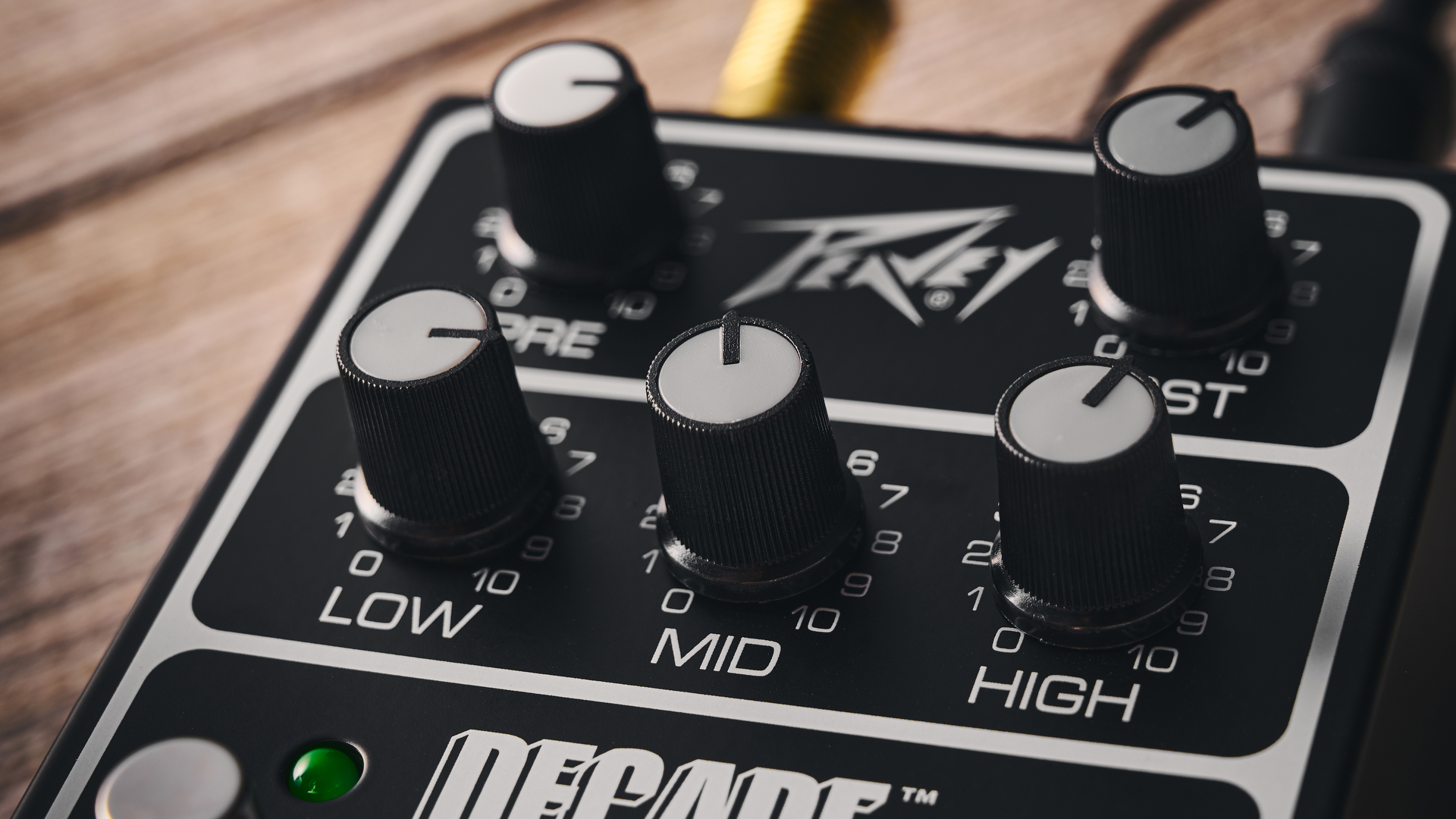
Usability rating: ★★★★☆
From thumping lows that shake the floor to piercing highs that make ears perk up, it's pretty easy to dial in a number of different tones
The Decade is a pretty simple affair, not that it needs to be complicated. Its intuitive control layout means you can dive right in and start jamming, leaving all those complicated settings and unnecessary distractions behind.
At the heart of the Decade are the dynamic twin gain controls: pre-gain and post-gain. The pre-gain dials in the foothold of your tone, shaping the level of input gain, while the post-gain fine-tunes the signal level before it hits the power amplifier. With a little tweak to both, you can effortlessly shift from crunchy rhythms to soaring leads.
And let’s talk about those EQ knobs, Low, Mid, and High. These are pretty powerful and broad controls. From thumping lows that shake the floor to piercing highs that make ears perk up, it's pretty easy to dial in a number of different tones. That said, I did find the mid control to be lacking precision. No matter where I placed it, I couldn't get the mid-frequencies to where I liked them. Perhaps a secondary Q control for the mids would improve this?
The Saturation switch is another standout feature that brings some real fun to the table. Designed to mimic the second channel of the original amp, it adds a rich layer of fuzzed-out distortion when stomped on.
Connectivity? Again, it's as simple as it comes, with standard 1/4” input and output jacks located on the top of the unit for easy access. It's worth noting that this pedal operates on either a 9V battery or a pedalboard power supply, but it internally boosts the voltage to 24V for added headroom.
Sounds
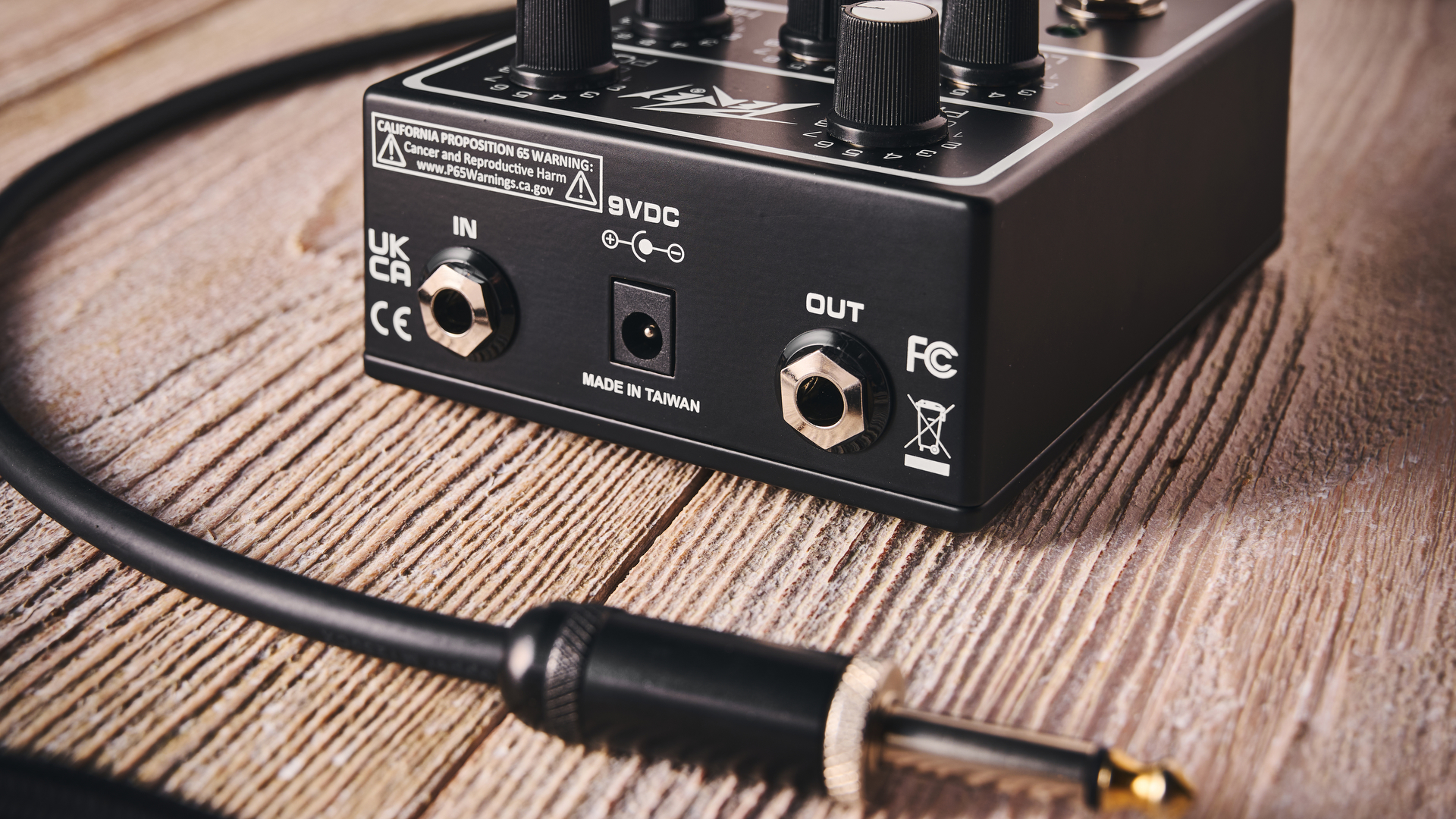
Sounds rating: ★★★★☆
Okay, straight off the bat, I’ll say it; this pedal isn’t for everyone. Josh Homme has described the tone of the original amp as ‘wiry,’ and I think that’s the perfect word to describe it. Relying more on pre-gain than post-gain results in a tone that sounds somewhat hollow in nature. Like something is missing in the midrange. Unfortunately, trying to dial in some of that missing mid-frequency using the onboard EQ only seems to increase the overall boxiness of the pedal and highlight the Decades' limitations.
Josh Homme has described the tone of the original amp as ‘wiry,’ and I think that’s the perfect word to describe it
That said, I don’t think anyone is buying this pedal for its clean tone. Stomp on the saturation switch, and the entire point of the Decade pedal comes into sharp focus. Fuzz-like, with a lo-fi edge that devours C-standard riffs, the pedal transforms a dull, lifeless clean sound into an inspiring explosion of grit and unfiltered distortion.
Ugly – but in a good way. That’s how I would describe the overdriven side of the Decade – especially if you crank both gain controls. There’s still a hollowness to the overall tone, but now that’s balanced out by an almost spitting top end, that’s fierce and cutting.
I know many pedals claim to sound unique, but few actually do. In a world where most overdrives on the market can trace their origins back to a Marshall, a Klon or a Tube Screamer, it’s refreshing to play through a pedal that genuinely has a sound all of its own. Okay, it may not be as sophisticated or classy as a boutique stomp, but I find the Decades’ retro ‘80s charm growing on me.
Verdict
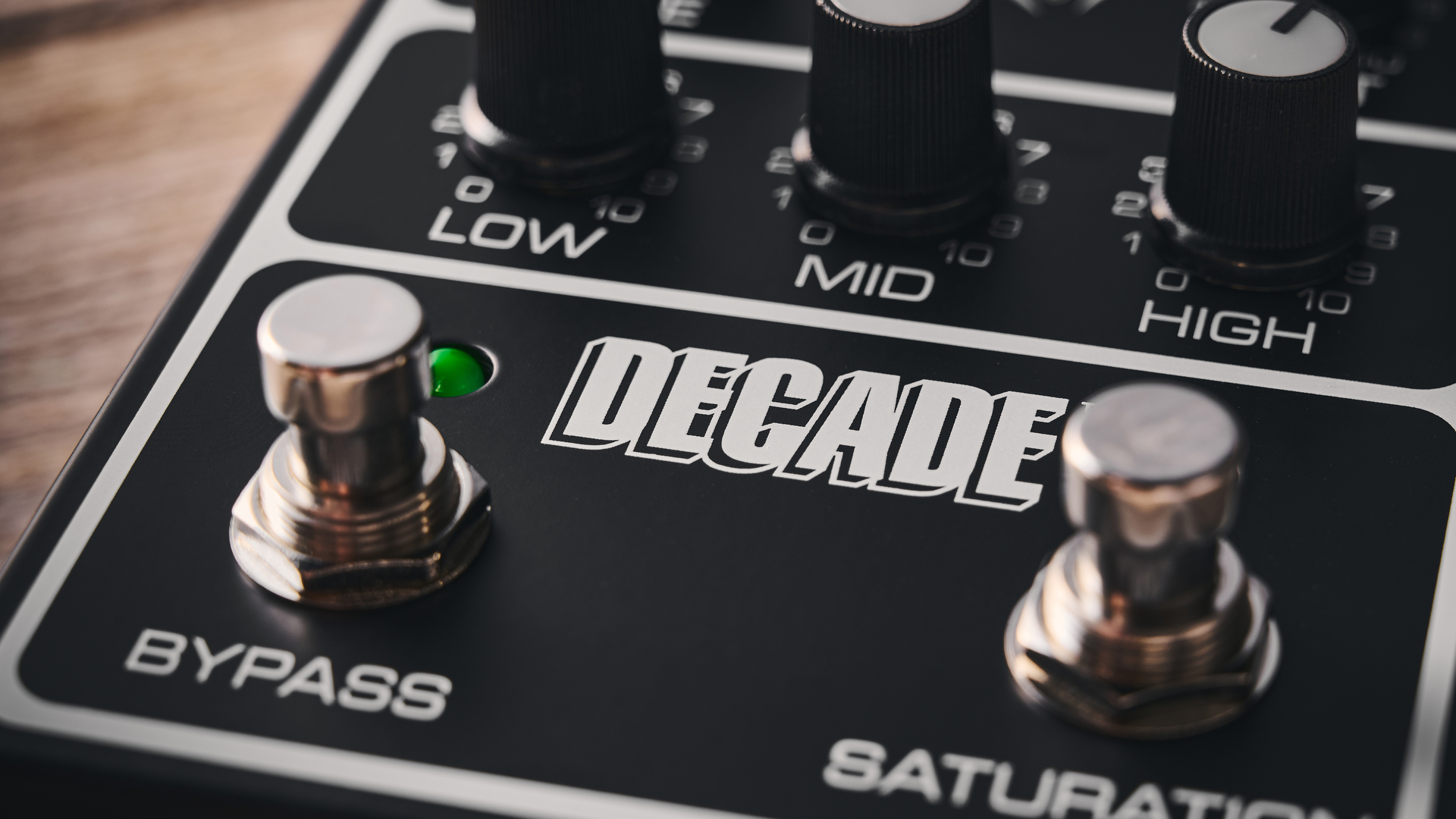
This is the exact amp circuit, just in a smaller package
Like I said earlier, I don’t think this pedal is for everyone. The Decade delivers a very specific tone, one that is instantly recognisable to stoner rock fans. So, if you're seeking a polished, smooth, modern distortion, this is most definitely not the stomp box for you. The Decade is unvarnished, undisguised, and unapologetically raw.
Now, at a list price of $239.99, it’s not cheap either. That said, the pedal is still significantly less expensive than buying an original example of the amp and is definitely more flexible. And it has to be said that this isn’t an emulation, or a digital recreation, this is the exact amp circuit, just in a smaller package – and engineering like this comes at a price.
Having the Decade shrunk down into pedal form allows you to harness the tone of this tiny practice amp in a much more convenient way, and the sky is the limit when it comes to stacking it with other pedals and amps.
Overall, I had a lot of fun with the Peavey Decade. This is the sort of pedal that makes you want to haul your amp out into the desert and play low-tuned riffs until the sun comes up.
Test | Results | Score |
|---|---|---|
Build quality | Well put together with a tough-feeling die-cast case and smooth controls. | ★★★★☆ |
Usability | Simple controls mean it’s very easy to use. | ★★★★☆ |
Sounds | It certainly does recreate the sound of the original Decade and is ideal for QOTSA riffage. | ★★★★☆ |
Overall | With a unique tone that won’t be for everyone, the Decade is a fun pedal that dares to do something a little bit different. | ★★★★☆ |
Also try
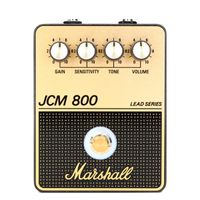
Marshall JCM800 pedal
$149/£119
Looking for the classic tone of a Marshall amp in pedal form? It's undeniable that no one knows the iconic Marshall tone better than Marshall themselves, so we’d opt for this fabulous JCM800 stomp.
Universal Audio UAFX Lion '68 Super Lead
$399/£379
The UAFX ’68 Lion goes beyond its promise of providing the most authentic Plexi tone from a pedal by providing emulation of three killer bucket list late-’60s Marshall amps that players can enjoy at any volume level and for about the price of one new old stock Mullard EL34 tube.
Read more: Universal Audio UAFX Lion ’68 Super Lead Amp review
Strymon Iridium Amp and IR Cab Simulator
$399/£399
Not only does the Iridium offer a range of amp and cab combinations with versatile EQ controls, including room ambience, it’s also compact and easy to use. It sounds good, too, doing a great job of modelling some classic amps and cabs like the Fender Deluxe, Vox AC30 and Marshall Super Lead.
Read more: Strymon Iridium review
Hands-on demos
Peavey Electronics
FACE MI
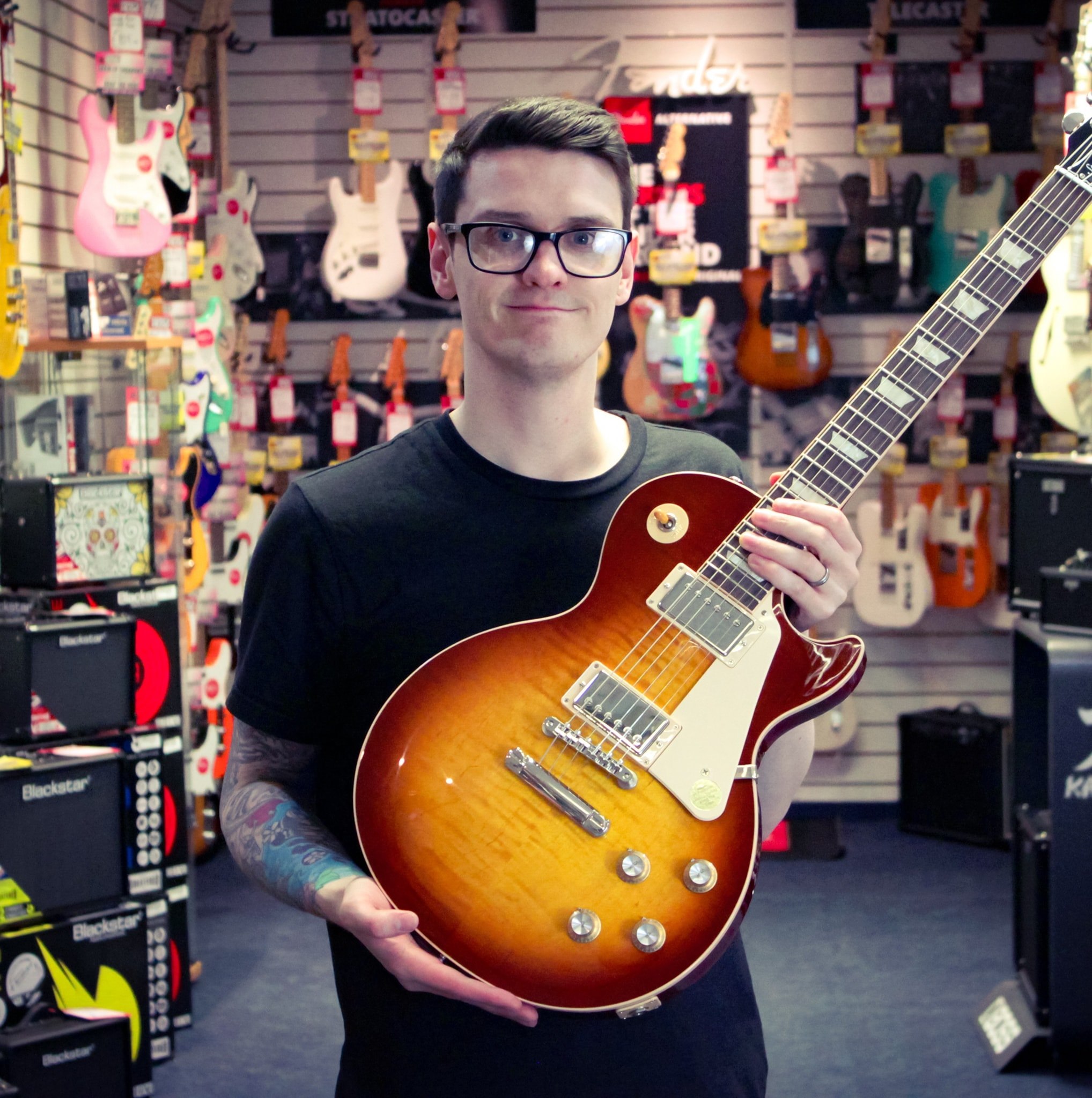
I'm a Senior Deals Writer at MusicRadar, and I'm responsible for writing and maintaining buyer's guides on the site. As part of my role, I also scour the internet for the best deals I can find on gear and get hands-on with the products for reviews. My gear reviews have been published in prominent publications, including Total Guitar, Guitarist, and Future Music, as well as Guitar World.com. I've also had the privilege of interviewing everyone from Slash to Yungblud, as well as members of Sum 41, Foo Fighters, The Offspring, and many more.
In a previous life, I worked in music retail, selling everything from digital pianos to electric guitars. I'm also a fully qualified sound engineer who holds a first-class Bachelor's degree in Creative Sound Production from the University of Abertay.
You must confirm your public display name before commenting
Please logout and then login again, you will then be prompted to enter your display name.
